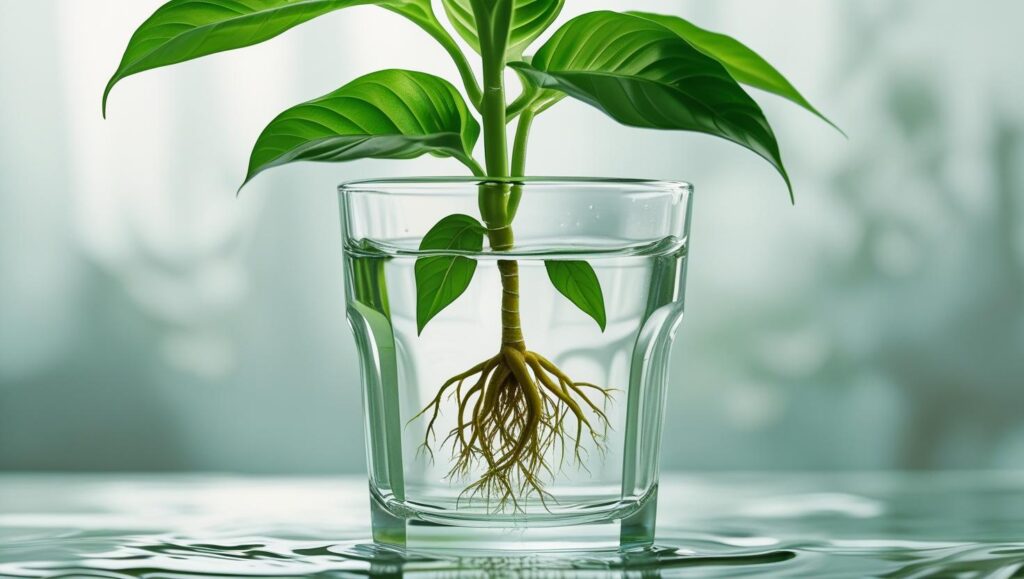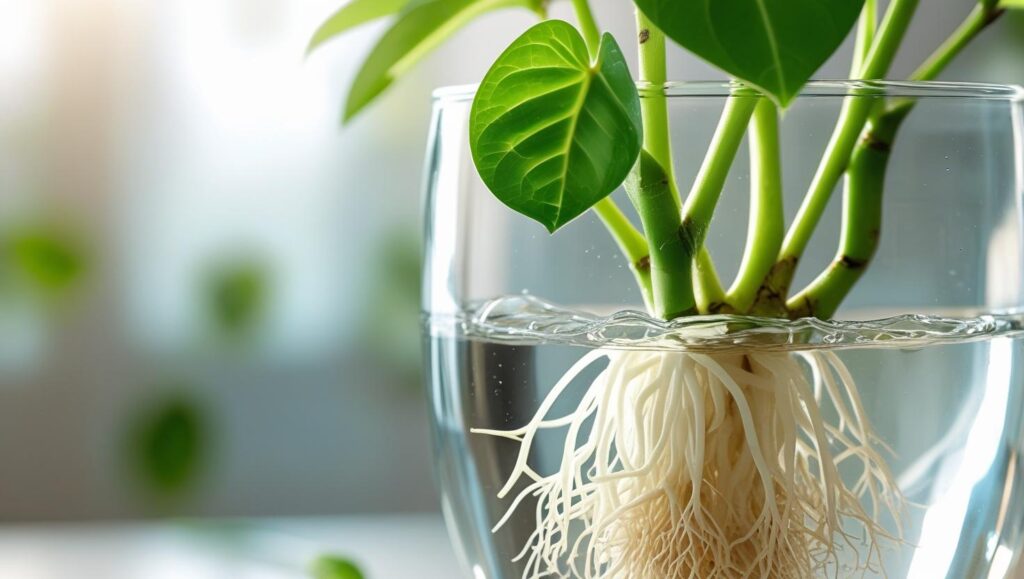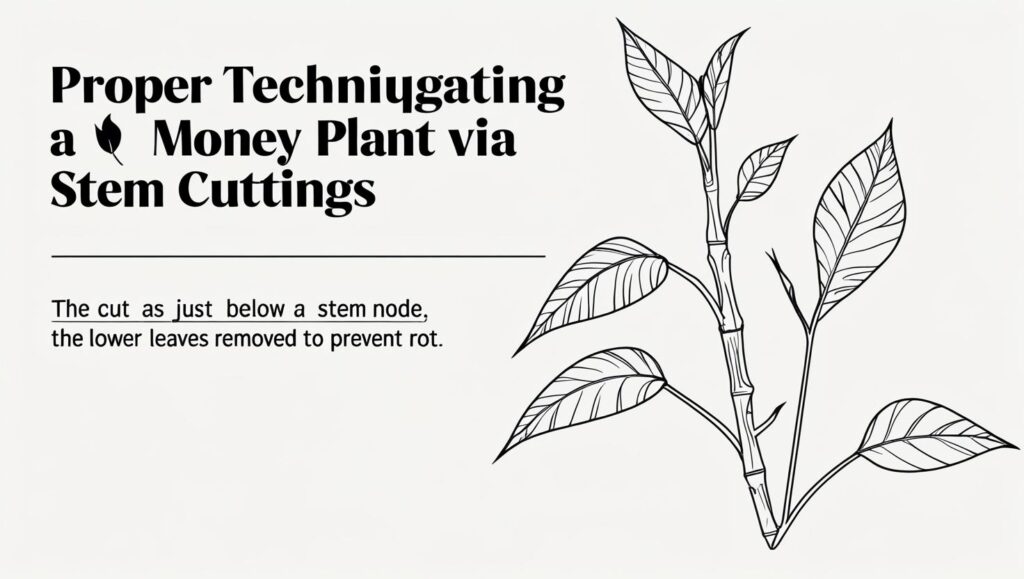For horticulture enthusiasts and novice gardeners alike, the process of cloning a money plant is a common entry into the world of plant propagation. The central question for many is how long it takes for a money plant cutting to root in water, a process that experts say typically requires two to four weeks, contingent on a specific set of environmental and biological factors.

While the method, known as water propagation, is celebrated for its simplicity, achieving successful and swift root growth involves more than just placing a stem in water. The health of the parent plant, the quality of the cutting, water hygiene, and ambient conditions like light and temperature all play a critical role in the development of a new, self-sustaining plant.
Money Plant Rooting Timeline & Factors
| Key Factor | Optimal Condition | Impact on Rooting & Source |
| Initial Rooting | Weeks 2-4 | Tiny white roots typically emerge from stem nodes within this timeframe. |
| Cutting Selection | Healthy stem with 2-4 leaves and at least two nodes. | Healthy cuttings with nodes (the point where leaves grow) contain the necessary cells for root development, according to Iowa State University Extension. |
| Water Quality | Change water every 3-5 days. | Prevents bacterial growth and replenishes dissolved oxygen, which is essential for root respiration. Stagnant water can lead to rot. |
| Light & Temperature | Bright, indirect sunlight; 65-80°F (18-27°C). | These conditions accelerate photosynthesis and metabolic processes, fueling faster root growth. |
| Transplant Time | Roots are 1-2 inches long. | Transplanting at this stage helps the plant adapt to soil more effectively, minimizing shock. |
The Science of Water Propagation: From Cutting to Rooted Plant
When a stem cutting from a money plant (Epipremnum aureum), also widely known as Pothos, is placed in water, it is stimulated to produce a new type of root. These are not primary roots like those from a seed, but rather “adventitious roots”—roots that grow from non-root tissue, such as a stem or leaf.
“The key to successful propagation lies in the nodes,” said a horticulturist from a leading botanical garden. “These small bumps on the stem contain dormant meristematic cells, which are undifferentiated cells that can develop into various plant parts, including roots.”
When a cutting is placed in water, these cells activate. The plant redirects its energy from leaf growth to healing the cut and forming a callus, a protective layer of cells. Following this, the adventitious roots begin to emerge from the nodes, seeking out oxygen and nutrients in their new aquatic environment.

A Detailed Timeline: Root Development Week by Week
While individual results vary, a general timeline for rooting a money plant cutting in water under optimal conditions provides a useful benchmark for progress.
Weeks 1-2: Callusing and Initial Root Formation
In the first one to two weeks, most of the activity is cellular and not easily visible. The cut end of the stem will form a callus. Towards the end of this period, you may notice small, white bumps or nubs emerging directly from the nodes submerged in water. These are the very first signs of new roots.
Weeks 3-4: Development of Primary Roots
This is the period where visible progress accelerates. The initial nubs will elongate into distinct, white roots. “Growers should expect to see several roots that are at least one to two inches long by the end of the fourth week,” advises the University of Florida IFAS Extension in its houseplant propagation guide. This length is a critical milestone, indicating the cutting is developing a system capable of absorbing water and nutrients.

Critical Factors That Influence Rooting Speed and Success
Several variables can significantly speed up or hinder the rooting process. Experts agree that managing these factors is crucial for reliable money plant propagation.
The Quality of the Cutting
A successful outcome begins with a healthy cutting. Propagators should select a vibrant, mature stem from the parent plant that has at least two to four leaves and several nodes. A cutting taken from a stressed, yellowing, or weak plant will have less stored energy to devote to root production.
Water, Oxygen, and Hygiene
Stagnant water is the most common cause of failure, leading to bacterial rot. “It is essential to change the water every three to five days,” a guide from The Spruce, a home and gardening publication, recommends. This practice not only prevents contamination but also replenishes the dissolved oxygen that the developing roots need to respire. Using filtered or dechlorinated tap water (left out for 24 hours) is also recommended.
Light and Temperature Conditions
Money plants root fastest in bright, indirect sunlight. Direct sun can scorch the leaves and overheat the water, while low light will slow down photosynthesis and, consequently, root growth. A stable temperature between 65-80°F (18-27°C) creates the ideal metabolic rate for development.
The Debate Over Rooting Hormone in Water
Rooting hormone, a synthetic auxin, is often used to encourage root growth in soil propagation. However, its use in water propagation is generally considered ineffective. Most commercial rooting hormones are in powder or gel form and will simply wash off the cutting in water, potentially fouling the container without providing any significant benefit. The natural hormones within the plant stem are sufficient for rooting in water.
The Critical Transition: Transplanting to Soil
Once the roots have reached a length of one to two inches, the cutting is ready to be transferred to soil. This step is delicate because water-grown roots are different from soil-grown roots—they are more brittle and less efficient at absorbing nutrients from a solid medium.
To ensure a successful transition, plant the rooted cutting in a well-draining potting mix. For the first two to three weeks, the soil should be kept consistently moist, but not waterlogged, to help the roots acclimate. This mimics the aquatic environment they are leaving. After this initial period, the plant can be treated like a mature money plant, allowing the top inch of soil to dry out between waterings.
The timeline for rooting a money plant in water is a predictable process guided by basic botanical principles. While patience is required, providing the right conditions—a healthy cutting, clean water, and adequate light—will reliably produce a new plant within a month, ready to transition to its permanent home in soil.
The Gardener’s Guide to Watering Ornamental Grass in a Changing Climate
